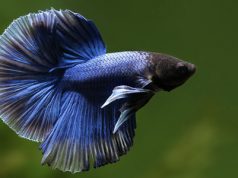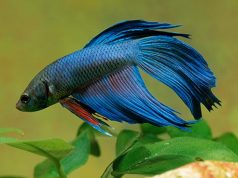Live Food
Live foods are an ideal food source for your betta fish. They are highly nutritious and have not lost any nutrient through processing such as drying or freezing. They also provide stimulation for the betta as they exhibit their natural predation behavior to feed.
A variety of live Betta fish foods are available locally, online or can be grown in culture yourself. A variety of worms such as microworms, white worms, vinegar eels and blood worms can be obtained from your local supplier or set up in culture to provide a steady food supply for your betta. Their requirements are simple and easy to raise. In many locations, mosquito larvae and daphnia can be found wild in standing waters. Brine shrimp eggs can be purchase and easily hatched in small quantities. Fruit flies are another nutritious source of betta food. They can be purchased online as a wingless variety so they don’t escape into the home.
The negative aspects of live food are they can be pricey. They can be more cost-effective if you raise them in culture yourself but this can be additional work. Live food can introduce infections into the betta tank. Again, maintaining your own cultures can reduce the chances of bringing in infections. Finally, betta love live food, and this can lead to over eating. Bettas will gorge until all the food is eaten. It is important to carefully limit the amount of live food that is given to avoid constipated and ill bettas.
Frozen Food
Frozen food is second to live food in nutrient value. Many of the same food that is available live is available as frozen. The advantages are that frozen food can be easier to obtain and store than live food. Blood worms, brine shrimp, Midas shrimp, and mosquito larvae are some of the foods available as frozen. Frozen food is ideal when live food is difficult to obtain, too expensive or difficult to culture. They provide variety and nutritional variation to the staple diet of betta fish.
Frozen betta food needs to be stored properly to avoid spoilage. Thawed food should never be refrozen. Only sufficient quantity that will be used with each feeding should be thawed at a time, and the rest refroze quickly. Frozen food should be warmed to water temperature prior to introduction into the tank. Frozen food should be crushed and mixed with water from the tank and let stand for ten minutes. Do not use tap water as this may introduce contaminants into the tank. Monitor the feeding of the betta as they will eat until all the food is gone and can readily over eat to the point of illness, constipation and obesity. Unused, thawed food should be thrown away.
Any one variety of frozen food is not nutritionally complete and should be used as an occasional supplement to the staple diet of a variety of food sources.
Freeze-Dried Food
Freeze dried foods are a convenient source of good nutrition for the betta fish. A variety of food such as Tubifex worms, Bloodworms, ocean plankton, Daphnia, and brine shrimp are available. These are live food that is freeze dried to retain high nutritional value, so they provide complete nutrition for the betta fish. They are behind live and frozen food for nutrition quality but have several advantages. They have a long shelf life, food remains fresh in open containers, and it does not require refrigeration.
The disadvantages are that freeze-dried food can absorb moisture in the digestive tract and lead to constipation problems. Soaking the food prior to introduction into the betta tank will reduce this problem. Also, the freeze-drying process may not completely sterilize the food. Freeze dried food, especially Tubifex worms and Blood worms can carry ick and bacterial infections, leading to illness. When occasionally used to supplement the diet, they can be safe and provide a tasty, nutritional treat.
Some vendors sell freeze-dried food specific for betta fish. Be sure that when rehydrated that the food size is small enough for the betta to ingest. San Francisco and OmegaOne, as well as Hikari brands, carry freeze dried Bloodworms.
Flakes

Commercial flake or pellet food can be the least nutritious food for your betta. They should be specifically formulated to be high in protein for the betta. Betta are carnivores in their natural habitat. Generic tropical fish food can be high in vegetable matter and not appropriate for the betta nutritional needs.
Dried commercial food is easy to obtain and has a long shelf life. Specialized flake food is available with nutrient supplementation, to enhance color or provide resistance to disease. Floating flakes and pellets remain on the water surface and are easy for the betta to feed with their upturned mouths. Betta specific flakes and pellets are appropriately sized for the betta’s mouth.
Flake and pellet food should be supplemented with live, frozen or freeze-dried food to provide a variety in the betta fish diet. Live food will also provide some stimulation for the betta as they hunt for their food.
Most betta fish are fed live or frozen food when young, and they will be difficult to switch to flake or pellet food. This has the advantage of not being able to overfeed the betta on commercial food. This can be ideal when you are away and give the feeding chore to a novice who may overfeed the fish.
This is a slightly edited and updated version of an article originally published on “Betta HQ” – bettahq.com


